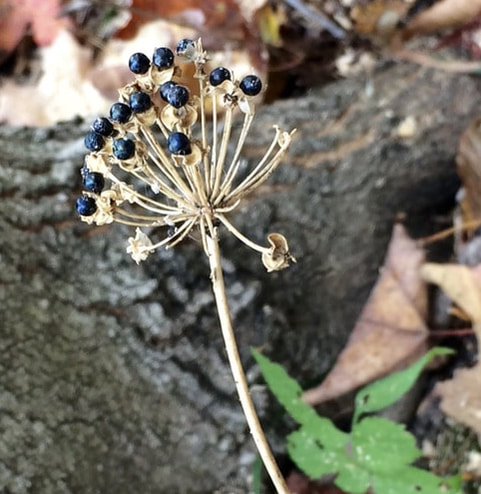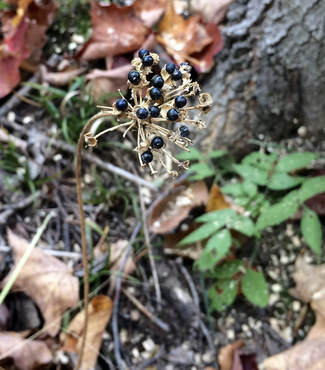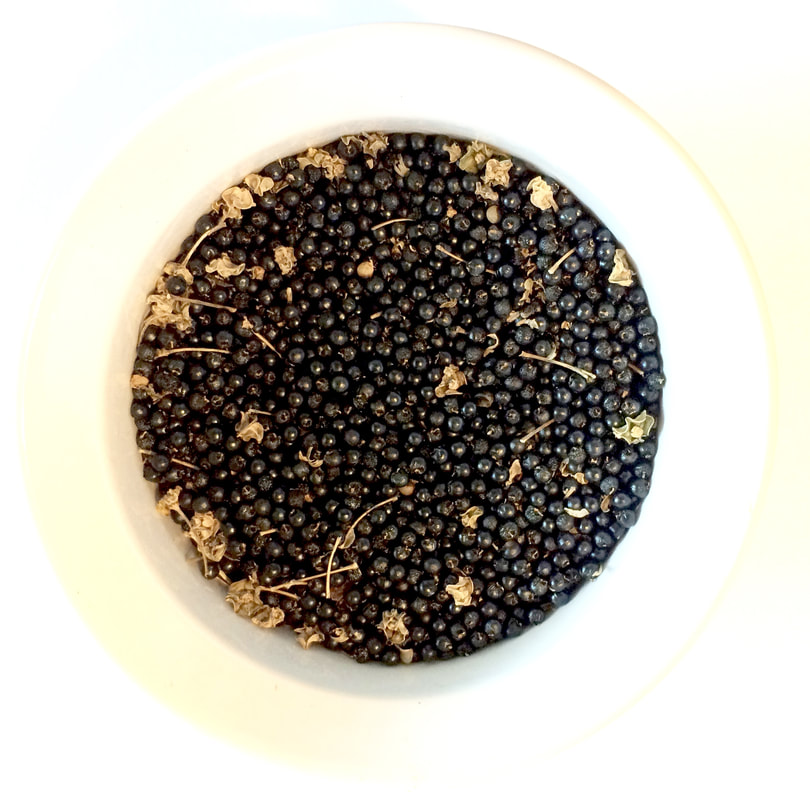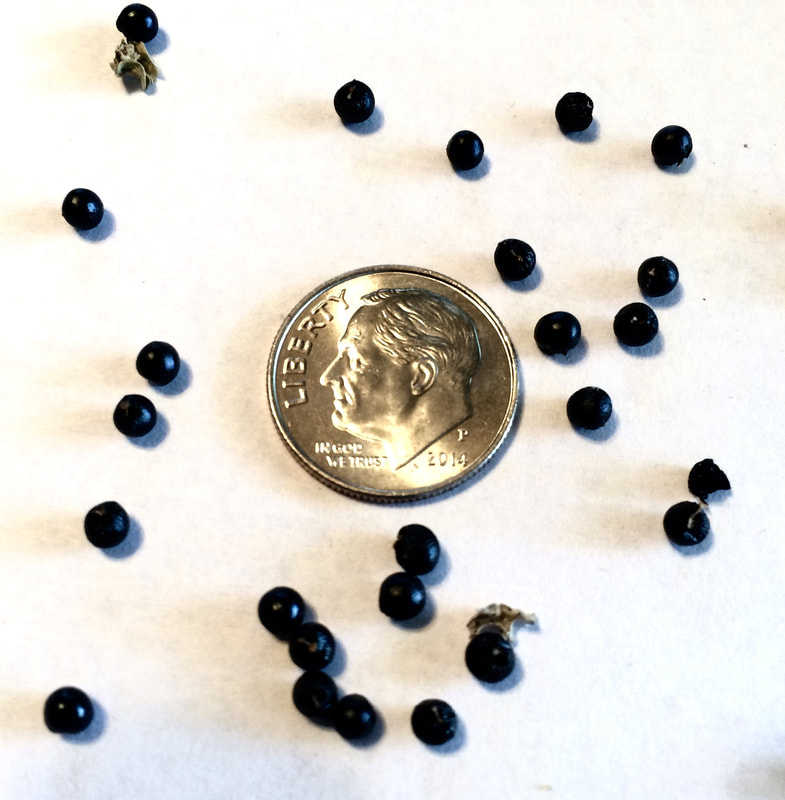Ramps are highly prized in the culinary world and almost all of the ramps consumed grow wild. Because of this, chefs & foodies can probably identify a ramp and note the differences between ramps & leeks better than the average gardener. Ramps do taste similar to leeks but they have a stronger flavor and their scent is more garlicky than a scallion. For us non-gourmets, ramps taste oniony. :^) Ramps are one of the first vegetables to emerge in the spring and were once considered a "tonic." Native people and settlers relied on ramps as a staple to their spring diets. Ramps are high in Vitamin C and provided much needed vitamins & minerals after a long winter without fresh vegetables. Ramps grow naturally under the forest canopy along side beech, birch, sugar maple and poplar. They can also be found growing in buckeye, linden/basswood, oak and hickory stands. In Northern Michigan, look for trillium patches. You're likely to find ramps growing there too. While you're at it, look for ginseng growing among the trillium & ramps and consider planting a ginseng patch. You can order ginseng root or seeds online. Ramp leaves resemble Lily of the Valley leaves but are slightly more narrow. The leaves fade quickly and will disappear by late spring making them a perfect addition to your shade beds. As the leaves fade a flower stalk will emerge and produce a pinkish-white flower. They say the apple doesn't fall far from the tree and neither does the ramp seed. In the fall, the spent flower heads will be covered in tiny black seeds. To preserve & maintain a health ramp colony, only collect only a few seeds from each clump making sure the clumps are spaced several feet apart from each other. Leave the rest for Mother Nature. Do not over pick. Ramps like rich, moist but well-drained soil full of organic material. Sow ramp seeds in the fall and be patient. Seeds can take 6 to 18 months to germinate! Ramp seeds have underdeveloped embryos that need warm, moist spring conditions to break their dormancy. Depending on the weather, it could take ramp seeds up to 2 years to germinate. All told, it will take 5 to 7 years from seed sowing to root harvest but ramps are well worth the wait. Ramp colonies will provide food for many years as long as they are not over-harvested.
Planting ramp seed is easy. Simply loosen the top layer of soil, sprinkle ramp seeds and lightly press them into the soil. Then cover with 1" of damp shredded leaves or compost. When the ramp leaves emerge they must be protected from the sun, heat and weeds. Remember, ramps are spring woodland plants so they need a cool, shaded location to thrive. If you do not have a shady spot to grow ramps it is possible to construct a shade shelter to grow them under although this is not ideal. Ramp bulbs will spread & colonize over time. You must be patient and allow your patch to spread. The best way to preserve & maintain a colony is to harvest by thinning. Mature ramps stand 6-8" tall. Select only the largest ramps from the patch. Do not over harvest. Ramps have a very short season so you will have to be quick! Ramp bulbs and leaves are both edible and can be eaten raw or cooked in any number of ways. Remove dirt from bulbs & refrigerate after harvesting or freeze bulbs you will not use within a few days. The leaves will begin to wilt almost immediately and must be eaten quickly. To preserve the leaves, incorporate them into your favorite pesto recipe or whip up a butter compound. So what happens if you're a few years into establishing your ramp colony and you decide you want to move them? No problem. You can transplant your colony by carefully digging up the entire clump, bulb & all. (Be sure not to damage the root or bulb!) Relocate & replant the clumps at the same depth 4 to 6" apart. Please do not dig up wild ramp patches to transplant into your gardens! The demand for ramps is quickly depleting ramp colonies. Plant ramp seeds instead and harvest wild ramps responsibly. Protect & preserve wild ramp colonies for generations to come. It is interesting to note that very little is known about about disease and pest problems in relation to ramp colonies. Septoria leaf spot has been observed in Tennessee & North Carolina but it did not seem to hurt plant yields. Establishing a ramp colony is a fun project for gardeners and a great way to gather much needed information. We'll be sure to share updates on our colony over the next 7 years!
0 Comments
Leave a Reply. |
Categories
All
Archives
July 2024
|
A Blog for Art, Garden & Nature Enthusiasts







 RSS Feed
RSS Feed

